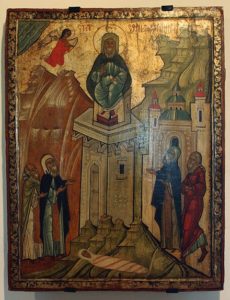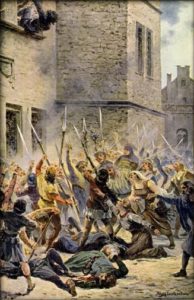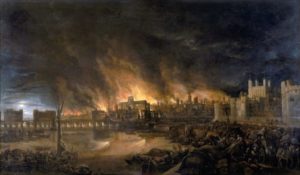459 St Simeon Stylites dies. Simeon was an ultra-ascetic Syrian monk, famous for having spent decades living atop a pillar, praying and preaching to the crowds who came to the desert to hear him. His example was widely-imitated for a time.
1192 Treaty of Jaffa between Richard and Saladin ends Third Crusade. Saladin’s capture of Jerusalem in 1187 sparked the Third Crusade which was to have been a joint venture led by the three great leaders of western Christendom: Frederick I Barbarossa, the Holy Roman Emperor; wily Philip Augustus of France; and Europe’s greatest warrior, Richard the Lionheart of England. Frederick died en route to the Holy Land and most of the German contingent turned for home. Philip weaseled out of his commitment early and returned to France to undermine Richard’s holdings in that country, leaving the English king with a much reduced force. He was able to defeat Saladin in open battle but lacked the resources to recapture Jerusalem. The treaty allowed for access of Christian pilgrims to Jerusalem and confirmed crusader holdings along the Mediterranean coast.
1415 Furious at the execution of Czech reformer John Hus by the Council of Constance, despite an imperial safe-conduct, an assembly of Bohemian and Moravian nobles sent the Protestatio Bohemorum, a letter of protest to the Council, vowing they would fight to maintain their religious rights. This would lead to the great Hussite Rebellion which raged from 1419 to 1433. The Czech reforming factions would defeat five Catholic crusades sent against them before agreeing to the Compacta of Prague which allowed some moderate ritual changes, especially the administration of both bread and wine to the congregation during the Mass.
1666 Great Fire of London starts. Among its architectural victims was Old St Paul’s Cathedral, a Gothic structure built from the 11th to the 13th century with a spire almost 490’ (149 m) tall. Its destruction led to the construction of a replacement designed by Sir Christopher Wren in the neoclassical style with a massive dome. Wren’s building was completed on Christmas Day 1711 and survived the German aerial Blitz during World War II.



